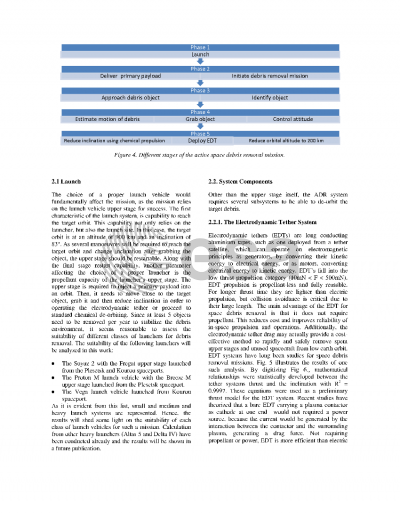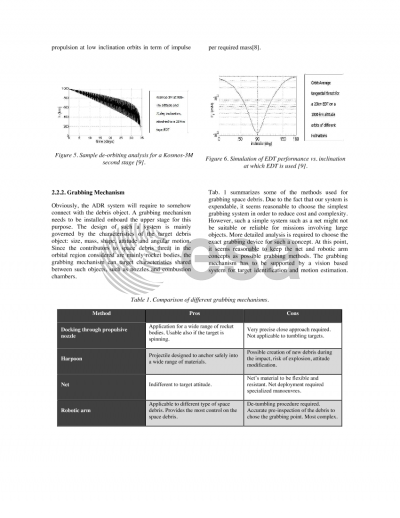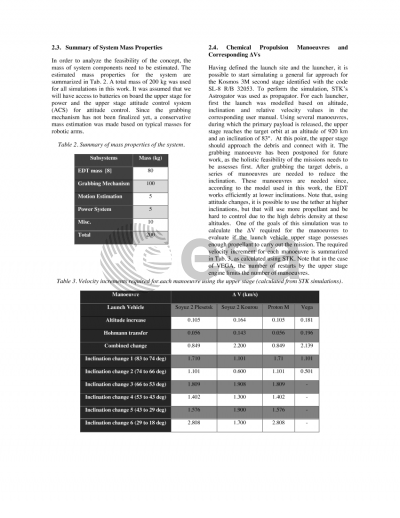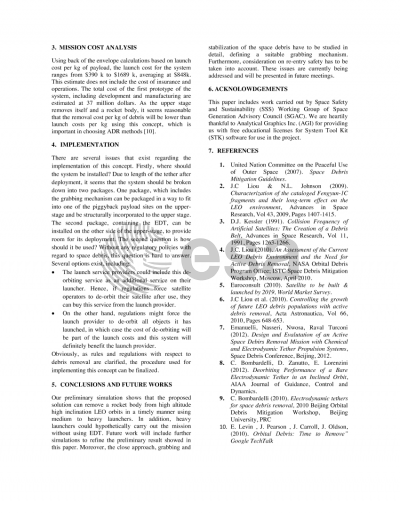Document details

Abstract
During the past few years, several research programs have assessed the current state and future evolution of the Low Earth Orbit region. These studies indicate that space debris density could reach a critical level such that there will be a continuous increase in the number of debris objects, primarily driven by debris-debris collision activity known as the Kessler effect. This cascade effect can be even more significant when intact objects as dismissed rocket bodies are involved in the collision. The majority of the studies until now have highlighted the urgency for active debris removal in the next years. An Active Debris Removal System (ADRS) is a system capable of approaching the debris object through a close-range rendezvous, establishing physical connection, stabilizing its attitude and finally de-orbiting the debris object using a type of propulsion system in a controlled manoeuvre. In its previous work, this group showed that a modified Fregat (Soyuz FG's 4th stage) or Breeze-M upper stage (Proton-M) launched from Plesetsk (Russian Federation) and equipped with an electro-dynamic tether (EDT) system can be used, after an opportune inclination's change, to de-orbit a Kosmos-3M second stage rocket body while also delivering an acceptable payload to orbit. In this paper, we continue our work on the aforementioned concept, presented at the 2012 Beijing Space Sustainability Conference, by comparing its performance to ADR missions using only chemical propulsion from the upper stage for the far approach and the de-orbiting phase. We will also update the EDT model used in our previous work and highlight some of the methods for creating physical contact with the object. Moreover, we will assess this concept also with European launch vehicles (Vega and Soyuz 2-1A) to remove space debris from space. In addition, the paper will cover some economic aspects, like the cost for the launches' operator in term of payload mass' loss at the launch. The entire debris removal mission from launch to de-orbiting of the target debris object will be analysed using Analytical Graphic Inc.'s Systems Tool Kit (STK).
Preview









